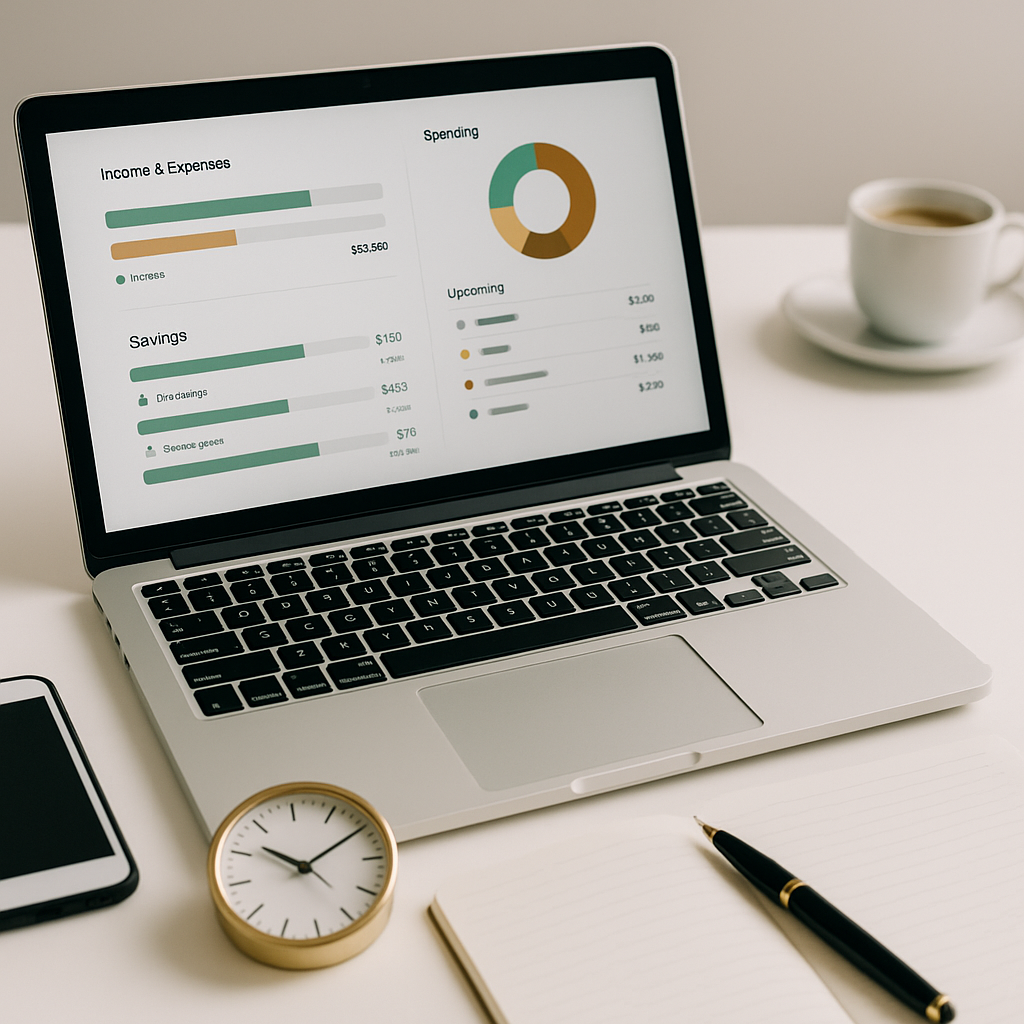Introduction
Money management doesn’t need to take hours — especially when you’re freelancing and already wearing five hats. I used to think staying “on top” of my finances meant weekly spreadsheets, calendar reminders, and a browser full of open tabs.
Eventually, I realized I didn’t need more discipline. I needed better systems.
Now, I do a full financial check-in every Friday in less than 10 minutes. This simple habit keeps me clear on where my money is going, what I’ve earned, and how close I am to my financial goals — without adding more work to my week.
Here are the three tools that made that possible.
1. A Visual Dashboard That Shows Me Everything at a Glance
The first tool I open each week is my money dashboard — not my bank account. Instead of jumping from one platform to another, I check one place that shows income, expenses, savings, and goals in a single view.
I built mine using a Notion template, though tools like Tiller Money or even Google Sheets work just as well. During my check-in, I update any client payments, refresh savings progress bars, and scan for upcoming large expenses. Usually, this takes under five minutes.
Because everything lives in one visual space, I don’t have to search. I can immediately see whether I’m on track, over budget, or ahead of plan.
This tool helps me focus on direction, not just numbers.
2. A Weekly Summary App That Highlights Trends, Not Just Transactions
After updating my dashboard, I open a money tracking app that connects directly to my business and personal accounts. This app automatically categorizes expenses, compares month-over-month trends, and flags anything unusual.
Rather than combing through every transaction, I scan the weekly summary. For example, if subscriptions jumped by $40 or if income dipped, it shows up immediately.
Currently, I use Monarch Money, but tools like Copilot or Lunch Money offer similar insights. What I love most is that this app shows patterns — not just data. I don’t have to guess where the money went or why the month feels tighter.
With one glance, I can see the story behind my cash flow.
3. A Goal Tracker That Makes Progress Easy to See
The last thing I check is my goal tracker — because knowing where you’re going is just as important as knowing where you are.
This tool breaks down my savings into small, clear goals: one for a time-off fund, another for future investments, and one for emergency reserves. I use an app with visual progress bars (like Qapital or Ally savings buckets), but you can do the same with a manual tracker if you prefer.
Even if I’ve only moved $20 that week, seeing progress helps me stay motivated. Over time, that consistency builds confidence.
Instead of guessing whether I’m “doing enough,” I see it.
My 10-Minute Friday Money Routine
Here’s how I use all three tools together, without letting it become another task on my list:
1. Open my dashboard. I check what came in, what went out, and how the month looks overall.
2. Scan my trends. I use my summary tool to flag unusual expenses or changing patterns.
3. Check my goals. I review my progress bars and decide if I want to boost anything next week.
Altogether, it takes under 10 minutes — but it gives me a full picture of my finances, every week.
Why This Works (Even Better Than Traditional Budgeting)
Traditional budgets often assume fixed income and fixed costs. For freelancers, that rarely holds true. Income changes, projects shift, and one late payment can throw off the whole month.
This system works because it’s flexible. It shows me what’s true today — not just what I hoped the month would look like.
More importantly, it reduces decision fatigue. I don’t need to constantly track every dollar. I just need to check in consistently.
Final Thoughts
If money check-ins feel stressful or time-consuming, your system might be too complicated — or too fragmented.
These three tools gave me back control, without demanding perfection. They don’t run my life, but they keep it aligned. I stopped managing chaos and started building clarity — ten minutes at a time.
You don’t need a complete overhaul. Just start with one tool that gives you a clearer view of your money this week. From there, you’ll know exactly what to do next.
